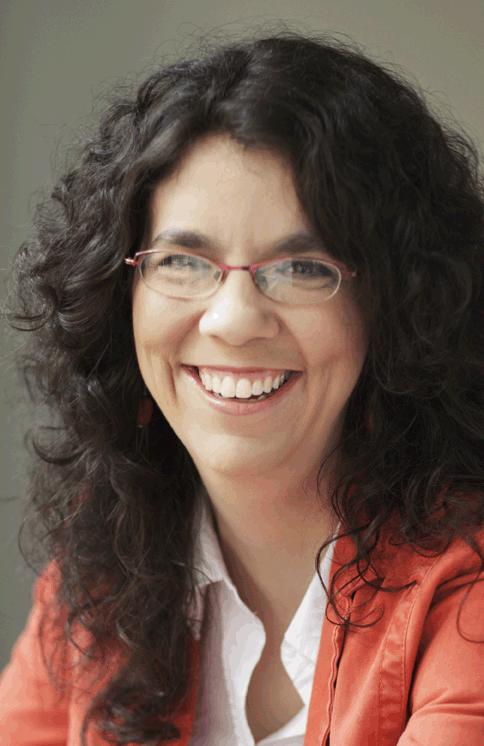
Our creative keynote speaker Rachel Hartman is the best-selling young adult author of Seraphina, Shadowscale, and the recently released Tess of the Road.
What inspired you to first write Seraphina?
My first idea for Seraphina came to me in the form of a question, as such ideas often do. What if you married someone with a terrible secret, and you didn’t know what it was until they were dead? That idea sounds more like an adult novel than YA, but it’s Seraphina’s father’s dilemma in a nutshell. His wife was a dragon in human form, and he didn’t learn the truth until she died in childbirth. The child lived, however, and she grew in my mind. What would it be like being raised by a father who felt alternately heartbroken and betrayed? What would happen if anyone learned the truth about her? How could she find her way out from the shadows of her father’s past and into the light of her own life? These are the questions that launched this book.
Tess of the Road is written quite episodically, while Seraphina is written in a more conventional narrative style. What was the writing process like for Tess compared to Seraphina? Do you prefer one way over the other?
The structure was dictated by the characters, honestly. Seraphina is a very logical, controlled individual, and the book is in first person, so the book was going to reflect these qualities. Tess, on the other hand, is emotionally volatile and sometimes literally can’t sit still, so her novel’s structure reflects these qualities as well. With Seraphina, the struggle was always not to make her too cold, to find points of emotional connection that could invite the reader in. Tess, on the other hand, was sometimes so emotional it could be hard to comprehend the reasons why. I’m not sure I prefer one over the other; each was a challenge to do well, and I like a challenge.
For those who may be unfamiliar, what do dragons represent in your world? What does that mean for Seraphina–a half-dragon, half-human–living in Goredd?
I love dragons for their versatility. In some mythological traditions they’re nothing but bestial monsters, pure raging evil, while in others they can be surpassingly intelligent and wise. It’s like they encompass the best and worst of humanity, taken to extremes. In my world, I try to combine both aspects in a unique way. When they’re in their natural form, my dragons are huge, spiny, flaming beasts, and of course the humans are terrified of them. When they take human shape, however, we get to look inside their minds a bit. They think differently than humans, value different things, but are they as monstrous as humans assume? They let us look at ourselves – our assumptions, motivations, and biases – through a fun house mirror.
Seraphina has to hide what she is. I was really trying to explore the idea of shame through her fantastical situation. Insofar as there’s a universal teenage experience (and I’m not really convinced there’s universal anything, anymore), I think this comes close: the experience of feeling like you are secretly monstrous, and that if anyone else ever found out, your life would be over. Fantasy allows you to make a character’s monstrosity literal, and then the reader can bring their own experience of shame to the book and decide for themselves what the metaphor means.
You focus quite heavily on some real-world issues in Tess, such as trauma, rape culture, consent, and recovery. What was it like exploring those issues in a high-fantasy setting?
I think fantasy was made for exactly this kind of exploration. What other genre lets you mythologize your own experience, paring truth down to the bone with incisive metaphor? I do feel fortunate that my world is already well-established through my first two books; we’ve done the world-spanning, high-stakes adventure, and now the world has nothing left to prove. It’s capacious enough for any kind of story I might want to tell.
Can you give us a hint to what you’ll be speaking about at the conference?
I recently read two fascinating books with annoyingly long titles — Less than Human: Why We Demean, Enslave, and Exterminate Others, by David Livingston Smith, and Behave: the Biology of Humans at Our Best and Worst, by Robert M. Sapolsky. These were both research for my next book, Tess’s further adventures, but they’ve really got me thinking about our distressing human tendency to dehumanize others. Our minds, for whatever reason, are able and willing – and even eager – to consider the possibility that there might be other beings who appear human on the surface but are something else underneath. Such beings are a common feature of stories around the world – fairies, vampires, zombies, even gods in some traditions – and yet kind of thinking also enables the greatest atrocities humankind is capable of. Nazi propaganda portrayed Jews as rats; the Hutu government depicted Tutsis as cockroaches in the lead-up to the Rwandan genocide. If your enemy is not a human but some monstrous Other, it’s much easier to countenance killing them.
Of course, I can’t read this without recognizing that I have created a fantasy world where the inhuman human literally exists: dragons take human form. In my talk I mean to examine this trope and explore ways that I and other authors have used and occasionally subverted it. I think it can, in fact, be used to poke holes in essentialism, expanding our understanding of what it means to be human, rather than constricting it.
